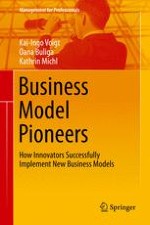2017 | OriginalPaper | Chapter
6. Customized and Built to Order: The Case of Dell
Authors : Kai-Ingo Voigt, Oana Buliga, Kathrin Michl
Published in: Business Model Pioneers
Publisher: Springer International Publishing
Activate our intelligent search to find suitable subject content or patents.
Select sections of text to find matching patents with Artificial Intelligence. powered by
Select sections of text to find additional relevant content using AI-assisted search. powered by
